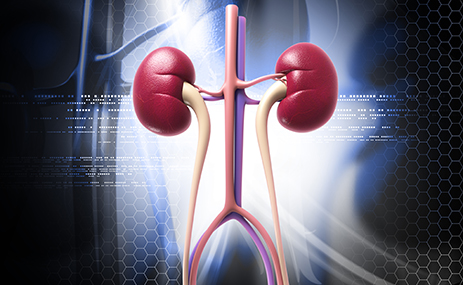In patients with hard-to-control high blood pressure (HBP), both non-pharmacological treatment and lifestyle changes have been useful to improve its control. Renal denevartion (RDN) was assessed as part of this complementary treatment, since some research has shown that this alternative decreases blood pressure (BP) values in different groups treated with either radiofrequency or ultrasound (uRDN).

RDN durability at 36 months has been reported in the follow-up of the Global SYMPLICITY registries and in the SPYRAL HTN-ON MED trial.
In order to report on office BP (OBP) response and safety in patients treated with uDNR, the 36-month follow-up results of the RADIANCE-HTN SOLO study (changes in OBP with uDNR using the Paradise system) were published.
Inclusion criteria were uncontrolled BP with OBP ≥140/90 mmHg and <180/110 when treated with 0-2 antihypertensive medications (AHM) or controlled BP with OBP <140/90 using 1 or 2 AHMs. Patients included went through a washout period before randomization (uRDN vs. sham procedure). In the 2-to-6-months follow-up, AHM was reintroduced in a standardized fashion.
The efficacy primary endpoint (PEP) was OBP change at 36 months. Baseline medication change was also evaluated at 36 months.
Read also: Adherence to P2Y12 Inhibitors in Acute Coronary Syndrome: Prognosis.
Of 74 patients initially randomized, follow-up data was obtained from 51. Their mean age was 53.9 years old, 66.7% of them were male, 82% were Caucasian, 52.9% were obese, and 7.8% had obstructive sleep apnea. The mean antihypertensive medication was 1.2±0.7 (51% one medication, and 33% two medications).
After the washout required by the study, there was an increase in BP of 9.3±12 mmHg. After to randomization to uRDN, blood pressure decreased to 10.0±14.7 mmHg at 2 months and, upon restarting the usual medication, the antihypertensive effect improved, with a decrease of 17.7±15 mmHg at 6 months. The mean decrease in systolic/diastolic OBP was 18/11 ± 15/9 mmHg, respectively (p < 0.001). Pressure control improved from 29.4% at baseline to 45.1% at 36 months.
There were no significant safety events at follow-up (only one event of renal angioplasty with stenting at 6 months after the procedure).
Conclusions
In this study, there was a decrease in time of -17.7 mmHg from baseline at the 36-month follow-up (with the addition of AHM). This may help to decrease the burden of cardiovascular risk, since, as previously seen, a 5-mmHg reduction in OBP could decrease the risk of major adverse cardiac events by 10%.

Dr. Omar Tupayachi.
Member of the Editorial Board of SOLACI.org.
Original Title: Durability of blood pressure reduction after ultrasound renal denervation: three-year follow-up of the treatment arm of the randomised RADIANCE-HTN SOLO trial.
Font: Rader, Florian et al. “Durability of blood pressure reduction after ultrasound renal denervation: three-year follow-up of the treatment arm of the randomised RADIANCE-HTN SOLO trial.” EuroIntervention : journal of EuroPCR in collaboration with the Working Group on Interventional Cardiology of the European Society of Cardiology, EIJ-D-22-00305. 1 Aug. 2022, doi:10.4244/EIJ-D-22-00305.
Subscribe to our weekly newsletter
Get the latest scientific articles on interventional cardiology





